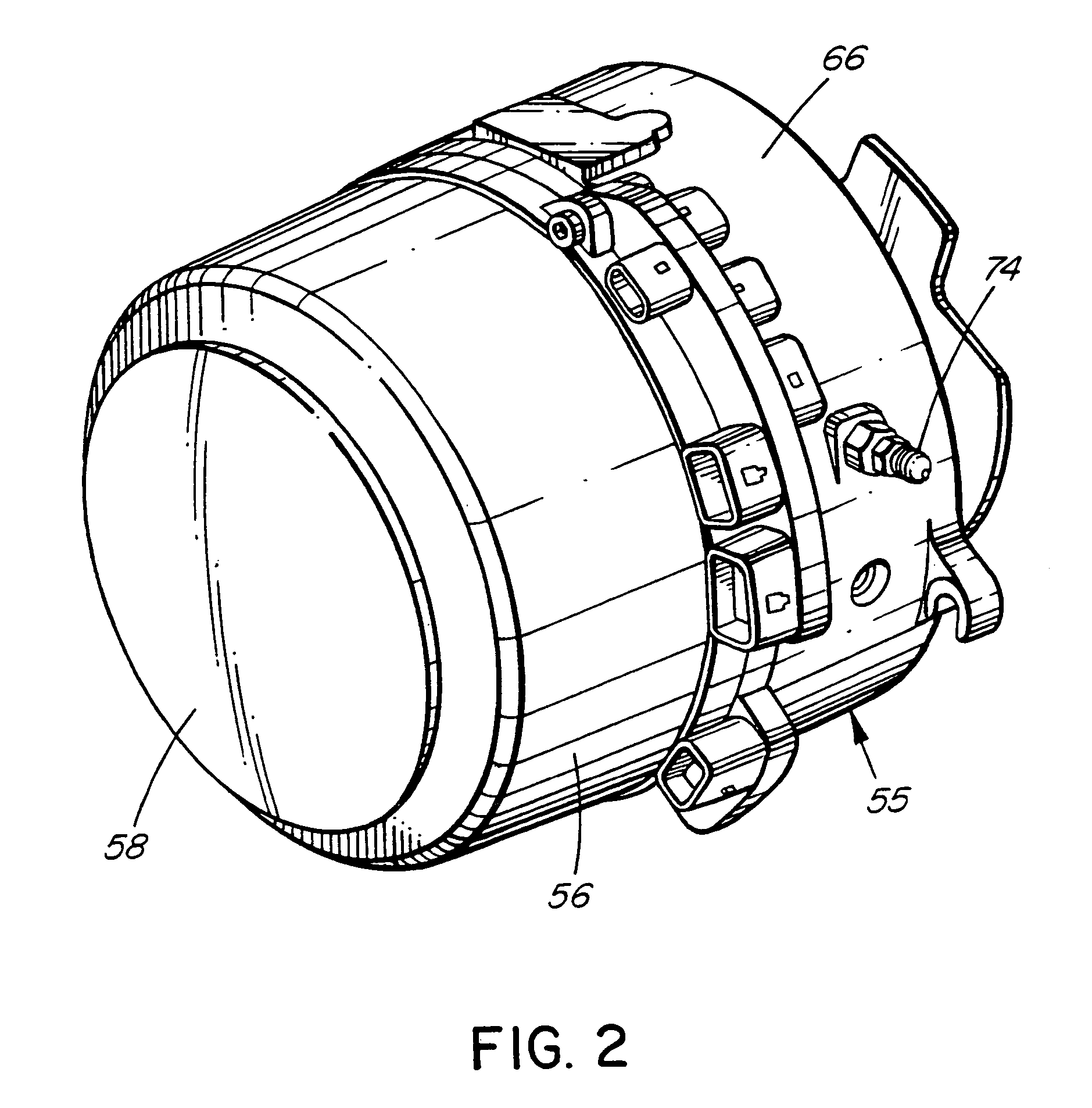Temperature maintaining apparatus and temperature control apparatus and method therefor
a technology of maintaining apparatus and temperature control apparatus, which is applied in the direction of lighting and heating apparatus, heating types, instruments, etc., can solve the problems of unsatisfactory performance, low and high temperature, and the temperature of the air in the vehicle drops to an uncomfortable level, so as to reduce the number of parts required, increase the degree of comfort, and reduce the effect of the number of parts
- Summary
- Abstract
- Description
- Claims
- Application Information
AI Technical Summary
Benefits of technology
Problems solved by technology
Method used
Image
Examples
Embodiment Construction
[0059]Referring to the drawings, and first to FIG. 1, this shows a transit heater 30 according to an embodiment of the invention. The heater includes a heat exchanger 32 equipped with a primary temperature sensor 34 and a secondary temperature sensor 36. The latter is optional as described below. There are fittings 40 and 42 which serve as inlets and outlets for liquid, a mixture of water and anti-freeze being the usual liquid for a transit vehicle heater. Mounting brackets 44 and 46 are connected to the heat exchanger for mounting the heater on a transit vehicle or similar application. A combustion tube 48 fits within the heat exchanger and a burner head assembly 50 fits over the combustion tube. The assembly is secured to the heat exchanger by bolts 52 and 54.
[0060]The burner head assembly is shown in better detail in FIGS. 2 and 3. The assembly includes a burner head assembly housing 51, cylindrical in this example, having two portions, a blower housing 56 and a head flange assem...
PUM
 Login to View More
Login to View More Abstract
Description
Claims
Application Information
 Login to View More
Login to View More - R&D
- Intellectual Property
- Life Sciences
- Materials
- Tech Scout
- Unparalleled Data Quality
- Higher Quality Content
- 60% Fewer Hallucinations
Browse by: Latest US Patents, China's latest patents, Technical Efficacy Thesaurus, Application Domain, Technology Topic, Popular Technical Reports.
© 2025 PatSnap. All rights reserved.Legal|Privacy policy|Modern Slavery Act Transparency Statement|Sitemap|About US| Contact US: help@patsnap.com



